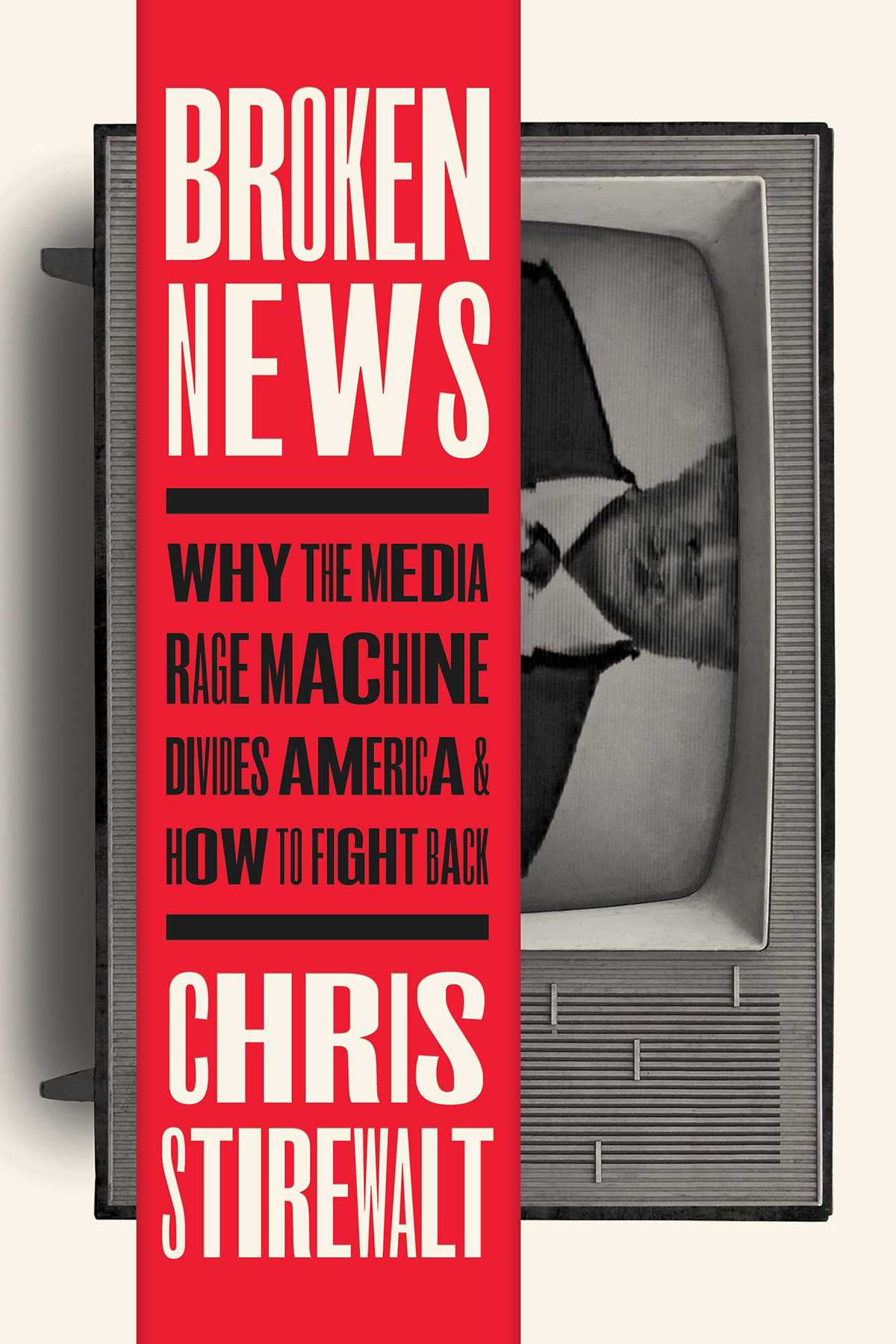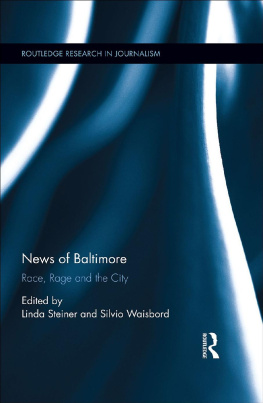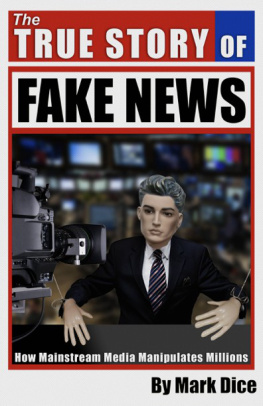
Copyright 2022 by Chris Stirewalt
Cover design by Faceout
Jacket photography by Shutterstock
Cover copyright 2022 by Hachette Book Group, Inc.
Hachette Book Group supports the right to free expression and the value of copyright. The purpose of copyright is to encourage writers and artists to produce the creative works that enrich our culture.
The scanning, uploading, and distribution of this book without permission is a theft of the authors intellectual property. If you would like permission to use material from the book (other than for review purposes), please contact permissions@hbgusa.com. Thank you for your support of the authors rights.
Center Street
Hachette Book Group
1290 Avenue of the Americas, New York, NY 10104
centerstreet.com
twitter.com/centerstreet
First Edition: August 2022
Center Street is a division of Hachette Book Group, Inc.
The Center Street name and logo are trademarks of Hachette Book Group, Inc.
The publisher is not responsible for websites (or their content) that are not owned by the publisher.
The Hachette Speakers Bureau provides a wide range of authors for speaking events. To find out more, go to www.hachettespeakersbureau.com or call (866) 376-6591.
Library of Congress Control Number: 2022937581
Interior book design by Timothy Shaner, NightandDayDesign.biz
ISBNs: 9781546002635 (Hardback); 9781668606391 (Audiobook); 9781546002819 (E-Book)
E3-20220706-JV-NF-ORI
FOR JESSICA
H anging over the heads, literally, of the reporters and editors in the Washington Posts newsroom on K Street are leaderboards that show which stories are clicking the best with readers in the digital world.
And what do the most active consumers of the Post want? Even on big news days, Post readers reliably plus-up stories that follow a couple of simple narratives: either wicked right-wingers getting their just deserts or the plights of innocents suffering because of right-wingers behavior.
Even on the day of the fall of Kabul in August 2021, the biggest foreign policy story in a decade, two of the top-five most read Post stories according to the sites public rankings were of these kinds. One was about a Syracuse, New York, police officer suing his department for alleged racial bias, citing comments his fellow officers made about his love of gangster rap and his Tupac Shakur tattoo. But the big mover was headlined A conservative cardinal who criticized the vaccine caught covid. Days later, he was put on a ventilator.
The story about the hospitalization of seventy-three-year-old Cardinal Raymond Burke, based entirely on a press release and some old articles, was so perfect for left-wing social media that it pushed ahead of gripping stories and images from the Posts own top-notch journalists on the ground in Afghanistan. The papers tweet of the cheap, taunting Burke story got thousands of likes and retweets as well as a river of repetitive memes and cruel contempt in the comments. Gross. But so what? If bored, angry people want to go on the internet and post fake Charles Darwin quotes and argle-bargle about religion and science, it doesnt do the rest of us any harm.
Except for this: The argle-bargle is the business model.
The industry that produces the raw material out of which Americans are supposed to build political consensus is sick. The path to profitability and survival for much of the news business now relies on products that are mostly either superficial fluff or distortions that exploit and deepen our countrys worsening political alienation. The hatred people feel for their fellow Americans is not just a by-product of political coverage, but a necessary component of making much of that coverage profitable.
And its not like you dont know it. Anger at or concern about the health of the news business was for decades a mostly right-wing issue. The focus was on Republican perceptions of liberal bias in the mainstream press, so Democrats mostly shrugged off the alleged problems. The claim was consistently overblown by Republicans, but even when it wasnt, why would Democrats complain about the referees siding with the home team? But in the past twenty yearsparticularly since 2015 and the ascendance of right-wing populismthe worries about how the news business works have become a bipartisan obsession. As with so much today, though, partisans are talking past each other as they seek to exploit the problem for their own advantage. It is sadly fitting that the acrid, partisanship-soaked public discourse created by our dumb news media prevents needed repairs to the media itself.
My hope for this book is that we can talk about the underlying problems with the industry, not the problems as they work for or against one party or faction. This is not intended as a liberal book or a conservative book, or really a political book at all, even as it examines media and politics. I have tried in every way I can to bring a spirit of fair inquiry and impartiality to my assessments. I am sure you will find my objectivity lacking at points, but my goal here is in no way to seek partisan advantage for anyone.
As a journalist, I believe that what is wrong with my vocation and the industry in which I work is harming Americans left, right, and center. Major players in the news business are abusing their privileges and shirking their duties, and we all pay the price. There are lots of books and articles that talk about how the news media is hurting select groups: Republicans or Democrats or populists or minority groups or the family or whatever suits you. But that kind of blame casting just alienates us further, replicating the core defect of the news media that critics are attacking. There is no trophy for being more harmed by our lazy, alienating press. Were all losers in this one.
The agenda at many outlets is to move away from even aspirational fairness and balance and toward shared anger and the powerful emotional connections it can create. I started out talking about the problem at the Washington Post not because it is an industry leader in monetizing hate, but because the paper was late to the conversion to brain-dead partisan tribalism. Once famously stodgy and mainstream, the Post embraced a new role as a combatant in the war against Donald Trump and the American right, which created a new permission structure for what
The neatest part of the optimizing for anger trick is that editors can let the digital newsroom leaderboards do their work for them. Reporters who want to get ahead will keep churning out simplistic, low-news-value, highly clickable stories about Tupac-loving cops or stricken old right-wing clerics. Thinking about writing something unconventional? Considering puncturing popular opinion? Want to explore political questions with subtlety and nuance? Just look up and see what the tote board says. Those arent the kinds of stories with upward mobility.
The Post employs lots of top-notch reporters, some of whom are left alone to do prestige journalism, but the trend is clear: Sneering at the right and flattering the left is the house brand at the WaPo. Thats what clicks, and it would take an iron will or a serious lack of ambition to resist. And it paid off, at least in the short term. Once the Post got good at chasing rage clicks, it was on its way to serious profits after years of lagging the pack. The paper would rake in more than $100 million in digital ad revenue in 2017, plus the subscriptions of more than three million digital-only subscribers.






